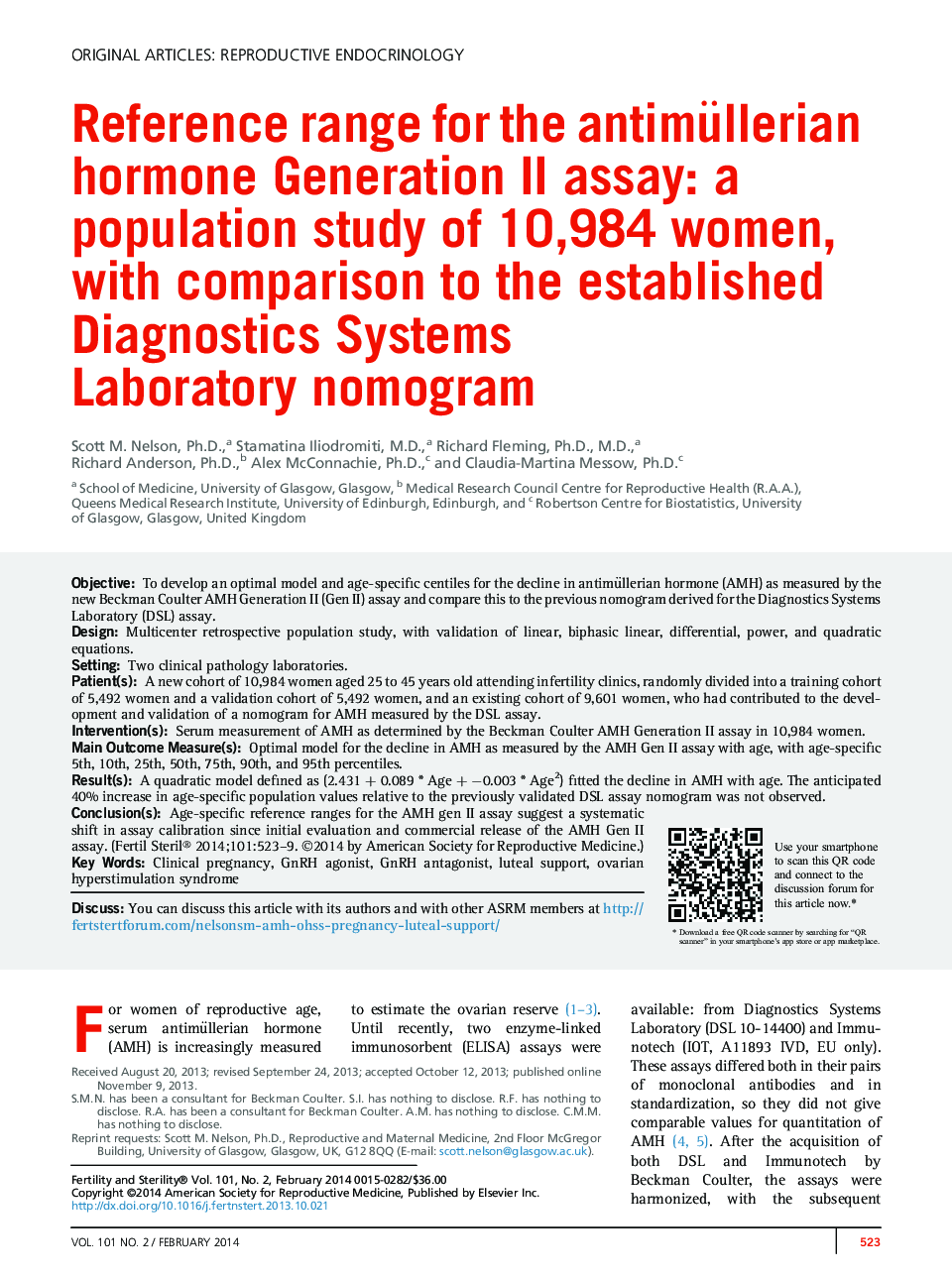| Article ID | Journal | Published Year | Pages | File Type |
|---|---|---|---|---|
| 6182212 | Fertility and Sterility | 2014 | 8 Pages |
ObjectiveTo develop an optimal model and age-specific centiles for the decline in antimüllerian hormone (AMH) as measured by the new Beckman Coulter AMH Generation II (Gen II) assay and compare this to the previous nomogram derived for the Diagnostics Systems Laboratory (DSL) assay.DesignMulticenter retrospective population study, with validation of linear, biphasic linear, differential, power, and quadratic equations.SettingTwo clinical pathology laboratories.Patient(s)A new cohort of 10,984 women aged 25 to 45 years old attending infertility clinics, randomly divided into a training cohort of 5,492 women and a validation cohort of 5,492 women, and an existing cohort of 9,601 women, who had contributed to the development and validation of a nomogram for AMH measured by the DSL assay.Intervention(s)Serum measurement of AMH as determined by the Beckman Coulter AMH Generation II assay in 10,984 women.Main Outcome Measure(s)Optimal model for the decline in AMH as measured by the AMH Gen II assay with age, with age-specific 5th, 10th, 25th, 50th, 75th, 90th, and 95th percentiles.Result(s)A quadratic model defined as (2.431 + 0.089 * Age + â0.003 * Age2) fitted the decline in AMH with age. The anticipated 40% increase in age-specific population values relative to the previously validated DSL assay nomogram was not observed.Conclusion(s)Age-specific reference ranges for the AMH gen II assay suggest a systematic shift in assay calibration since initial evaluation and commercial release of the AMH Gen II assay.
